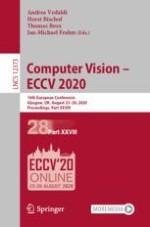The 30-volume set, comprising the LNCS books 12346 until 12375, constitutes the refereed proceedings of the 16th European Conference on Computer Vision, ECCV 2020, which was planned to be held in Glasgow, UK, during August 23-28, 2020. The conference was held virtually due to the COVID-19 pandemic.
The 1360 revised papers presented in these proceedings were carefully reviewed and selected from a total of 5025 submissions. The papers deal with topics such as computer vision; machine learning; deep neural networks; reinforcement learning; object recognition; image classification; image processing; object detection; semantic segmentation; human pose estimation; 3d reconstruction; stereo vision; computational photography; neural networks; image coding; image reconstruction; object recognition; motion estimation.
